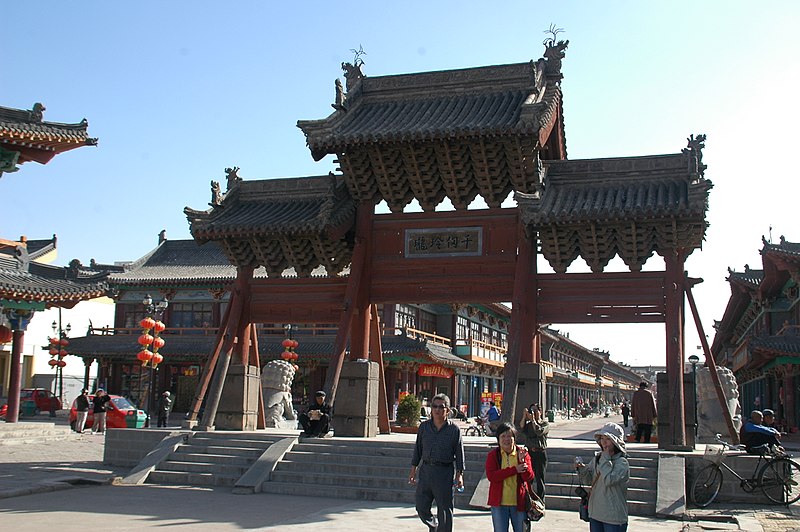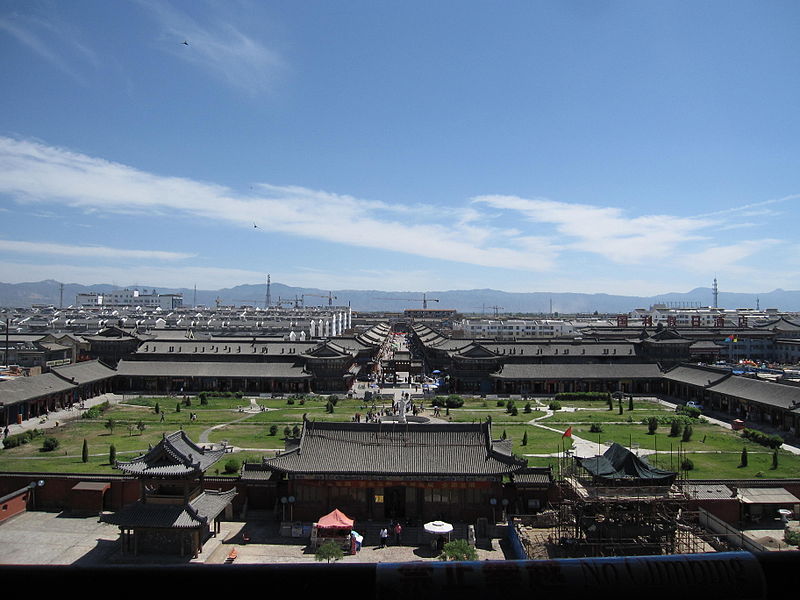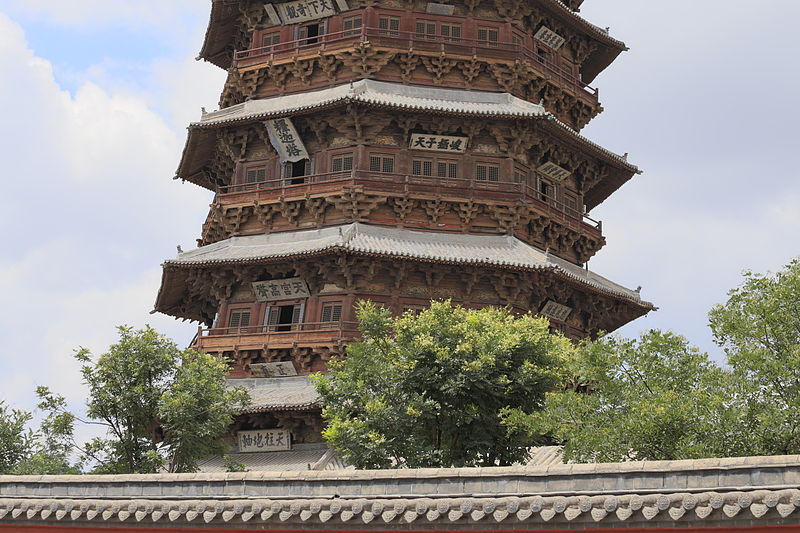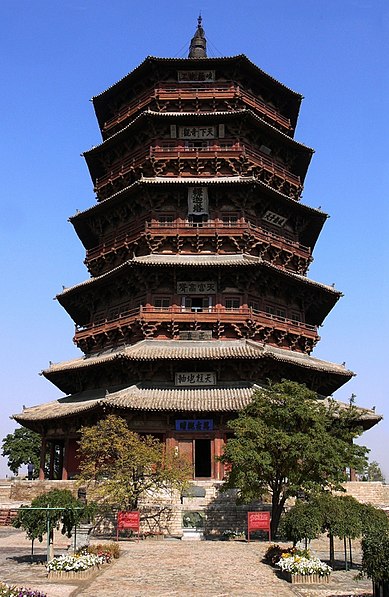Pagoda of Fogong Temple

Facts and practical information
Rising majestically in the Shanxi province of China, the Pagoda of Fogong Temple is a testament to the architectural prowess and religious devotion of the region's ancient civilization. This wooden pagoda, also known as the Sakyamuni Pagoda, is an awe-inspiring structure that dates back to the year 1056 during the Liao Dynasty, making it over 900 years old and one of the oldest wooden buildings in the world.
Standing at an imposing height of 67.31 meters, the five-story pagoda is a marvel of ancient Chinese engineering and design. The structure has withstood numerous earthquakes, wars, and the ravages of time, a testament to the sophisticated construction techniques utilized by its builders. The pagoda's design incorporates an octagonal base that tapers elegantly as it ascends, a shape that is believed to have contributed to its remarkable durability.
Visitors to the Pagoda of Fogong Temple are often struck by the intricate wooden brackets, known as dougong, which are a characteristic feature of traditional Chinese architecture. These interlocking wooden supports, which are used throughout the pagoda's frame, allow the structure to flex and absorb the forces of nature without the use of nails or adhesives.
The temple complex itself has undergone restorations over the centuries, yet it remains an authentic representation of Liao Dynasty Buddhist architecture. Inside, the Pagoda houses a statue of the Sakyamuni Buddha and is adorned with vivid frescoes and carvings that depict the life and teachings of the Buddha, adding to the site's religious significance and artistic value.
应县佛宫寺 Fogong Temple朔州市 Shanxi
Pagoda of Fogong Temple – popular in the area (distance from the attraction)
Nearby attractions include: Jōdo-ji.








